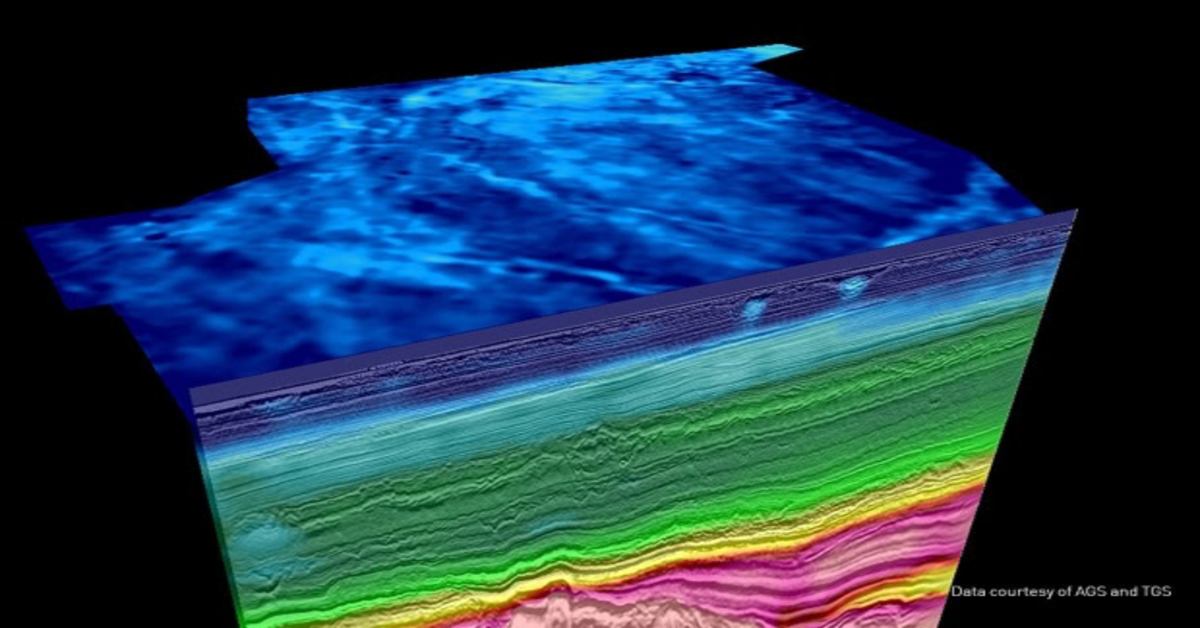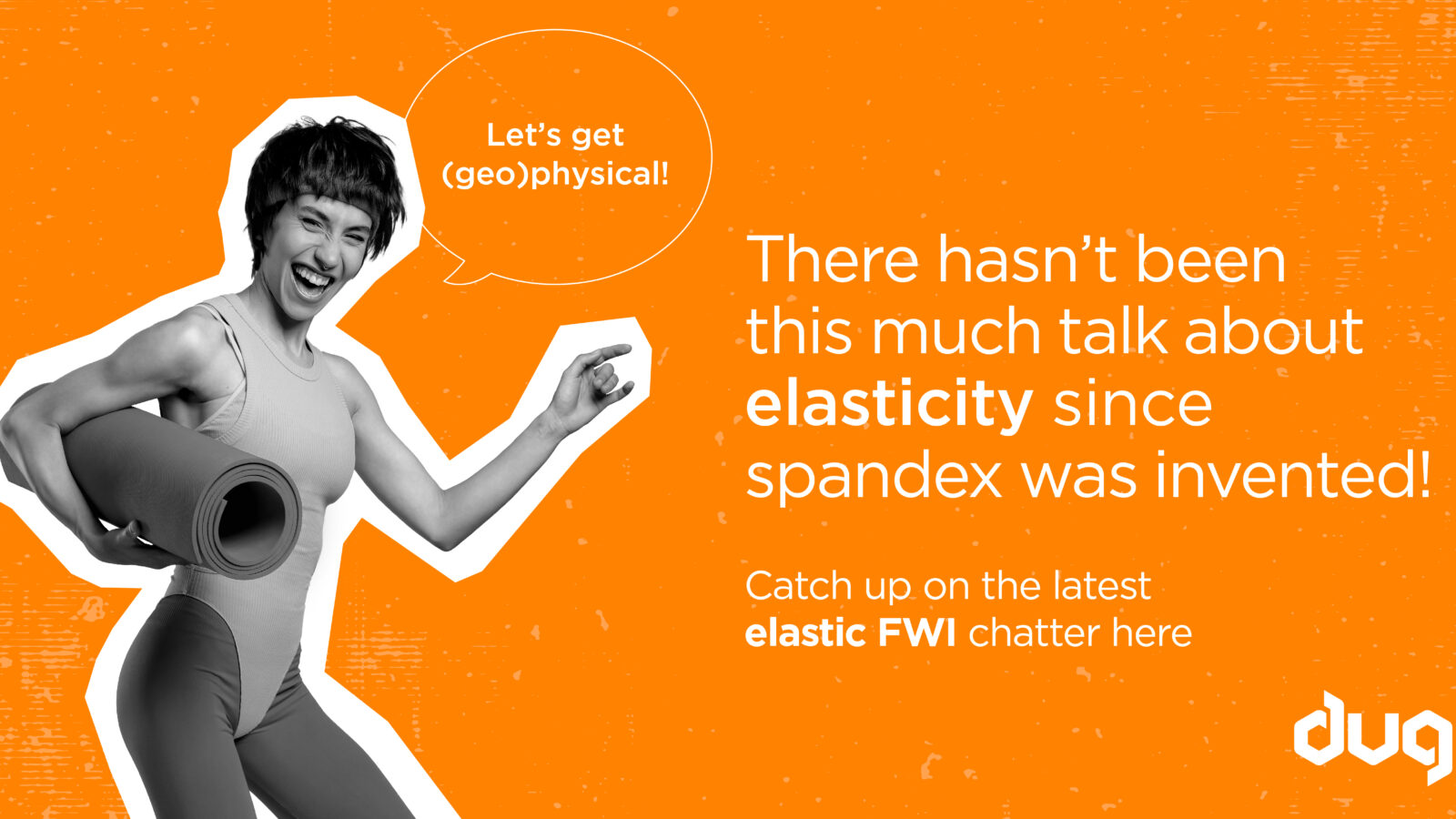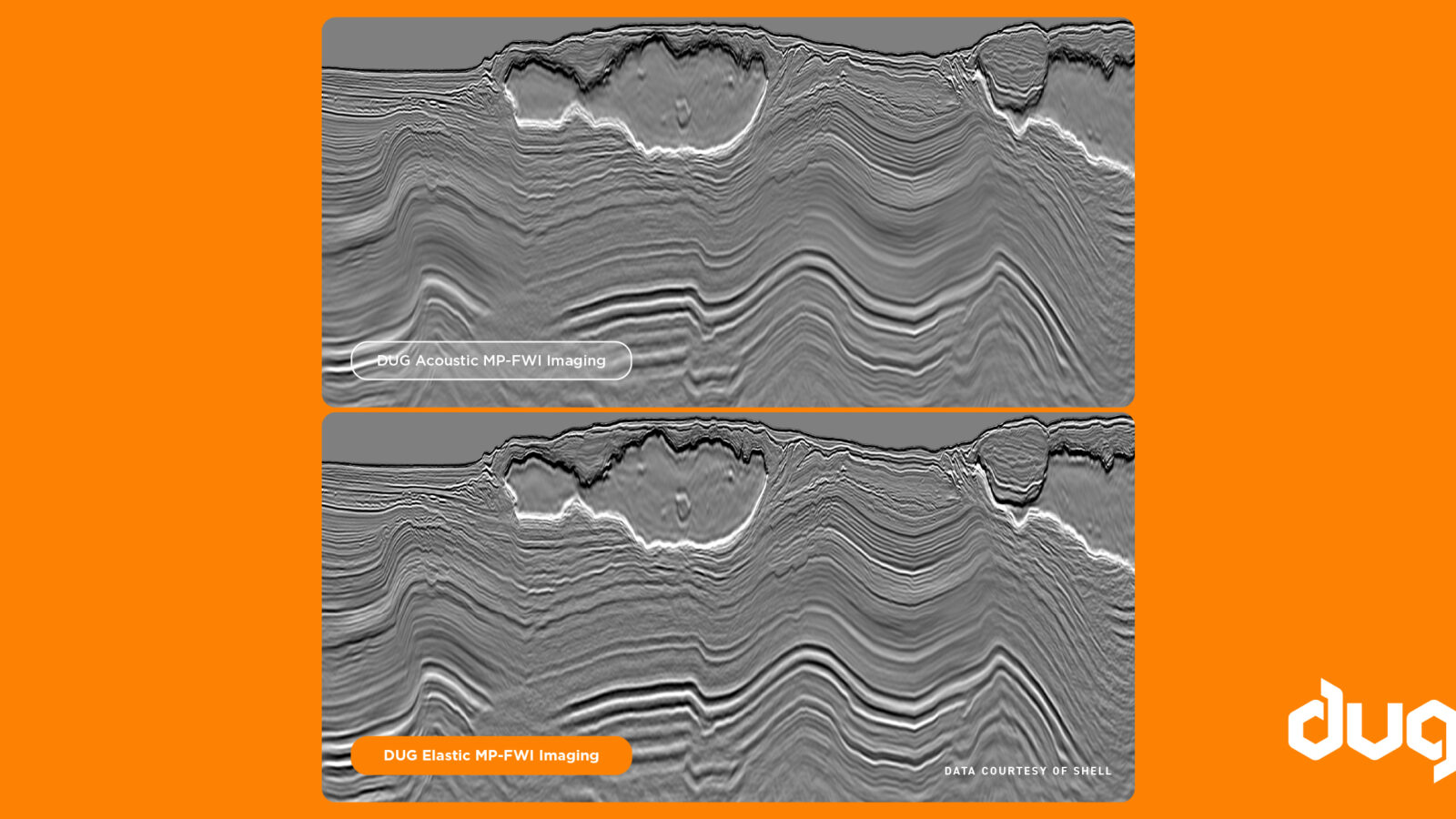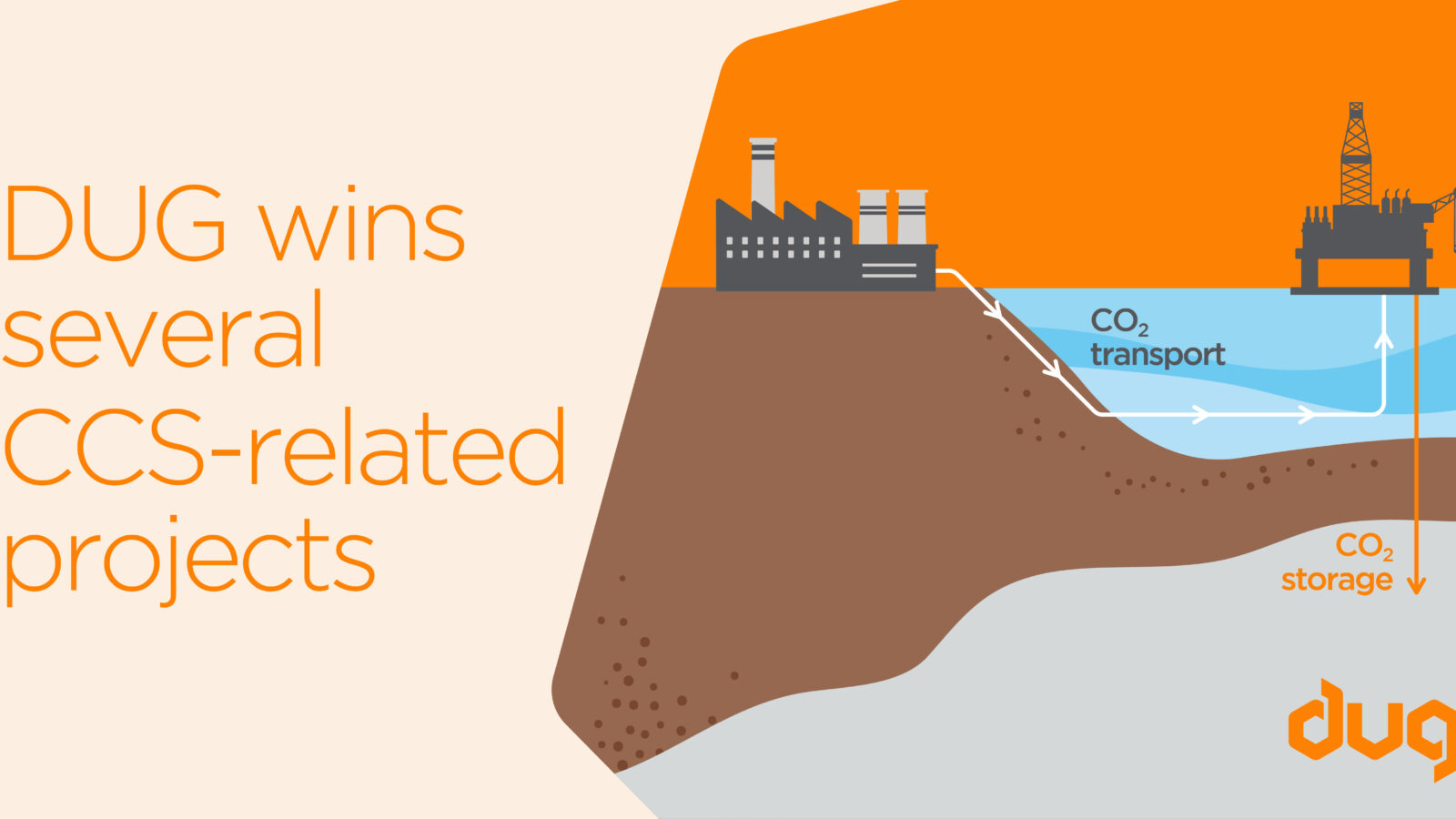DUG Wave offers you a complete full waveform inversion (FWI) model-building solution.
Source wavelet inversion provides a more accurate and stable input signature to FWI. This is a crucial first step to overcoming the common limitations of software-modelled source signatures.
DUG Wave also supports all land, marine and ocean bottom seismic acquisition geometries, either individually or in combination as a single inversion for multiple survey inputs.
In addition, with cycle skipping techniques you can use simpler starting models at higher frequencies, leading to reduced overall turnaround time.
Diving wave and reflection FWI options are available with the latter providing velocity updates below the diving wave limit as well as delivering a least-squares image using the full wavefield.

Starting velocity model (left) and final model (right) after FWI. Depth slice and inline with migrated stack overlaid with the respective velocity model. In this OBN example the shallow channels are well resolved after FWI, correcting the imaging distortions at depth. (Data courtesy of AGS and TGS)
Sophisticated cross-talk mitigation strategies enable multi-parameter inversions for velocity and Q, as well as velocity and epsilon as part of the FWI model-building workflow. (See illustration below)
This is supported by a range of data-conditioning tools and a novel technique to accelerate convergence using a scheme borrowed from the world of machine learning.
Local and global QC products are automatically generated to monitor convergence and ensure high-quality output models.
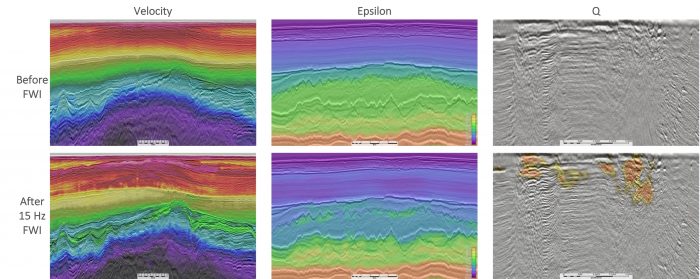
DUG Wave FWI is a complete model-building toolkit with sophisticated multi-parameter inversion schemes to solve for a range of outputs including velocity, epsilon and Q. For a larger view of this image click here.
DUG Wave FWI is a complete model-building and imaging solution:
- High-frequency imaging with FWI (read our FAQ sheet here):
- Simultaneous model building and full-wavefield least-squares imaging.
- Joint inversion for velocity and reflectivity.
- High-frequency reflectivity for quantitative interpretation.
- Full offset and angle stack output.
- Model building:
- Diving wave FWI.
- Reflection FWI.
- Epsilon inversion.
- Q inversion.
- Source wavelet inversion.
Features include:
- Loop-skipping mitigation.
- Integrated footprint removal.
- Accelerated convergence using machine learning techniques.
- Domain decomposition.
- Multi-survey and -acquisition-geometry compatibility.
- Bespoke functionality for marine (both shallow and deep water), land and OBS.
- Extensive quality control:
- Integrated QC products and data-manipulation with complete control of dataflow pipeline.
- QC maps (including quantitative measures of objective function and phase).
- Synthetics-only (forward modelling) mode.
- Independent source-wavelet inversion.
- Diving-wave depth of penetration analysis.
- Designed for HPC—computer science and hardware interactions are managed by the software for maximum robustness and efficiency.
Ready to power up to high-frequency FWI? Drop us a line at [email protected] and we’ll be more than happy to answer any questions you might have!


